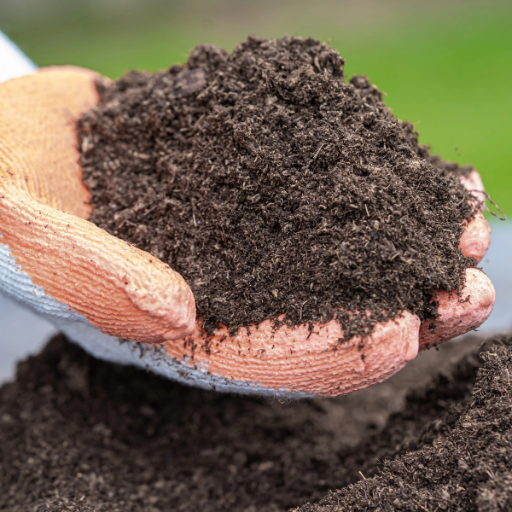Soil fertility is a crucial aspect of agricultural productivity and environmental sustainability. While it is often assumed that soils rich in organic matter are inherently fertile, this is not always the case. Understanding the factors that contribute to soil fertility involves examining the balance of nutrients, microbial activity, and the physical properties of the soil. This blog aims to explore the reasons why soils with high organic content might still face fertility challenges. By delving into the complex interactions between organic matter and soil health, we can uncover how other factors like pH levels, nutrient availability, and water retention impact overall fertility. Through this exploration, readers will gain insights into sustainable soil management practices that can enhance fertility and support long-term agricultural productivity.
What Is Soil Fertility and Why Is It Important?

Definition of Soil Fertility
Soil fertility is defined as the capacity of the soil to supply nutrients to plants and support their growth and productivity. It is one of the derivatives of the physical, chemical and biological characteristics of soil. In broad terms, a fertile soil is well rounded in having enough nutrients, sufficient quantities of organic matter, good pH and a thriving microbial population. However, organic matter is vital in sustaining soil health in terms of improving its structure and retention of water, but its presence does not always guarantee soil fertility. Additionally, plant development may be restricted in organic-rich soils due to other factors such as nutrient excesses, poor drainage, or mottling due to acidity. Therefore, the understanding of soil fertility and management practices must integrate concern for all dimensions of soil health so that agricultural practices are sustainable.
Soil Management and Soil Fertility in Modern Agriculture N-P-K Analysis
Fertile soils contain all necessary nutrients for plant growth and help avoid situations where a crop is deficient or lacking essential elements. Adequate growth of both macronutrients and micronutrients is necessary for optimum crop development, which includes nitrogen, phosphorus, and potassium, as well as calcium, sulfurs, boron, molybdenum, manganese, copper, and iron among others. Nitrogen, phosphorus, and potassium are the most prevalent macronutrients which can also be referred to as N-P-K. Soils which are dual deficient in macronutrients and micronutrients invariably portray poor plant growth as they lack vital elements for physiological processes such as photosynthesis, energy transfer, and root development, amongst others. Nitrogen is crucial for leaf development and growth, phosphorus for energy storage and its transfer, and potassium for the regulation of metabolic activities.
Components of Soil and Their Importance
A general definition of soil can be made up of an assemblage of mineral particles, organic matter, water, and air, which all contribute in one way or the other in condoning the growth of plants. The physical structure of the soil, which contains sand, silt and clay, comprises of mineral particles ; It determines the type of soil, its drainage capacity and its ability to hold nutrients. Organic matter, for instance plant and animal remains that have rotten, are very important when it comes to soil improvement, stabilization, moisture holding as well as nutrient content. Soil water is a nutrient dissolvent and is very important in biochemical processes of plants life. Gases present in soil spaces also have another function – supplied oxygen to the roots and any soil life – very essential in respiration and for nutrient recycling. These elements combine together to answer the needs for plant growth but their management is determinative for achieving soil security and its fertility.
How Does Organic Matter Influence Soil Fertility?
The Advantages of Organic Matter
Organic matter profoundly impacts soil fertility by improving its physical, chemical, and biological properties. It enhances soil structure by binding soil particles, enabling better aeration and water retention, ensuring that moisture is readily available to plant roots. Organically, organic matter has high nutrient reserves, which are gradually released to plants as soil moisture containing nitrogen, phosphorus, and sulfur, which are vital for plant development. Other than that, it enhances cation exchange capacity (CEC), which assists in retaining plant nutrients in the soil and further makes those nutrients available for plant absorption. From a biological perspective, organic matter enhances soil life activities and applies to soil organic matter as OH1 Figure 8-5 depicts; soil microbes are crucial in the decomposition of organic material, nutrient recycling, and improving plant systems. Organic matter inherently improves plant productivity and the ability to withstand environmental pressures due to the development of a healthy soil system.
Large Amounts of Organic Material vs. Fertility
The integration of high proportions of organic materials into the soil could enhance the fertility of the soil however, this comes with the need for management. Organic matter in excess quantities may create an imbalance such as a nitrogen deficiency due to an increased competition among microbes and the plants for the available nutrients. Nonetheless, suitable amounts preserve soil structure, enhance water holding capacity, and help in offering balanced nutrients necessary for plants’ growth. Organic material, when in appropriate proportion, contributes to enhancing the diversity of soil microorganisms which leads to enhanced nutrients cycling and helps the soil to better withstand harsh conditions. Hence, the amount of organic material should be balanced so as not to limit its contributions towards soil fertility.
Effect of Organic Matter on Soil Structure
If more focus were put on soil’s organic matter emphasis would be placed on its role and on increasing aggregate stability and porousness. The binding of soil particles into aggregates happens with the addition of organic material making the aggregates more stable, thus enhancing aeration and the permeability to water. This improvement in soil structure provides better chances of plant roots to access required nutrients and water while penetrating deeper into the soil. Also, organic matter plays a very important role in minimizing soil compaction and erosion by creating a loose and less dense soil structure. As a consequence, moisture and organic matter enriched soils, are said to be well drained, and resistant to erosive forces which would influence positively the growth and their overall productivity of plants.
What Can Cause Soils Rich in Organic Matter to Be Poorly Fertile?

Imbalance of nutrients in the organic matter
An imbalance of nutrients in organic rich soils can arise in a situation where the decomposition process does not produce a reasonable array of essential nutrients. For instance, plant matter with a high-carbon to nitrogen farm such kind of organic matter will cause nutrient immobilization i.e. the microbes in the soils utilize nitrogen for there decomposition processes which makes it rare for the plants to have access to the nutrient. In the same way, other nutrients phosphorus and potassium may also not be available in adequate amounts, resulting in deficiency conditions. This imbalance can interfere with the growth of plants; therefore there is a need for monitoring and regulation of nutrient inputs so that an appropriate ratio is maintained which would ensure maximization of soil fertility.
Weather Changes and It’s Impact on the Rate of Decomposition of Organic Matter
Weather is an important factor that affects organic matter decomposition in different ways. It can either help or slow down the decomposition process. In particular, temperature and moisture are important; warm and wet conditions usually help speed up the decomposition process because they are favorable for microbiological activities and enzymatic reactions. In contrast, cold or dry conditions can slow down the rate of decomposition because the microbial processes that drive the decomposition greatly go down in colder environments and moisture is less available. Additionally, different weather patterns, including intense rainfall, can alter soil texture and leach nutrients that may also affect the nutrient ratios during decomposition. All of these weather impacts are essential to understand in relation to utilization of soil and fertility management to assist in agricultural practices as it enables plans to be put in place on improving nutrient cycling and organic materials decomposition.
The Importance of Inorganic Minerals in Enhancing Soil Fertility
Due to the inherent quality of nutrients they possess, inorganic minerals play an important role in increasing the fertility of the soil. Nitrogen, phosphorus, and potassium are key minerals that act as macronutrients, which are the building blocks required by plants to grow and develop. Nitrogen helps in the process of photosynthesis and growth; phosphorus assists in energy transfer, nucleic acid metabolism, and root development; and potassium controls various enzyme actions and the amount of water which enters the plant. Apart from these macronutrients, calcium, magnesium, and sulfur also function as secondary nutrients in the enhancement of the structural composition of plants and regulation of soil pH. Other trace minerals, such as iron, manganese, and zinc, are also fundamental to different physiological processes in plants had in fewer amounts. Knowledge of the requirements of different types of crops together with knowledge of the existing mineral composition of the soil assists in the effective management and application of inorganic minerals with a view on improving agricultural productivity and sustainability.
Can Soil Structure Affect Fertility in Organic Matter-Rich Soils?

The Role of Soil Structure in Nutrient Retention
Nutrient retention is notably influenced by soil structure as it determines the amount of porosity and permeability in the soil. Allowing for efficient oxygen and nutrient access by the roots is a well-defined soil structure characteristic that aids air and water circulation ideal for the plants. These processes can be affected by compacted or poorly structured soils which can result in waterlogging or erosion and thus soil prevents nutrient retention. With granular or loose soil structures, root penetration and microbial activity are increased which in turn enhances the breakdown of organic matter into usable nutrients. In addition, soil structure influences the cation exchange capacity (CEC) which is the ability of the soil to retain the positively charged nutrients. A increased CEC following enhanced soil structure allows for retaining important cations such as calcium, magnesium, and potassium, while improving the soil’s overall fertility.
Improving Soil Structure for Moderately Higher Elongation Growth
Soil structure is enhanced through a series of practical measures that seek to boost central soil properties as well as soil fertility level. One way this can be achieved is by integrating organic nutrients like compost or well aged manure, which enhance soil consistency, moisture retention and promote microbial action. Also, it would be helpful if nitrogen, which is a core nutrient for plants, is added through legume cover crops to help loosen up hard soils. Soil compaction and even erosion can be avoided through reduced tillage, reducing the chance of soil restructuring. Soil fertility can also be improved through increased biological activity and crop rotation which avoids the depletion of nutrients. Lastly, on a general scale, lime or sulfur through amendments helps maintain the right nutrient availability which in turn promotes healthy soil ecosystem.
Soil Organic Matter and Its Influence on Soil Composition
The soil organic matter considers a physical shape because it has the ability of interlinking soil materials into aggregates in a stable manner. Such aggregation improves pores’ configuration and, therefore, secures movement of air and water that is very important for the development of roots and activity of microbes. In addition, organic matter contributes onto the moisture content of the soil which improves the moisture accessibility in times of drought important for plant growth. It also works as a nutrient bank by being gradually depleted through decomposition and thus, enabling the long term maintenance of soil fertility. And in doing so, farmers are able to keep a reasonable relationship between organic matter and soil structure and hence improve the yield and thus the soil health, for the case of sustainable farming practices.
What Practices Can Improve Soil Fertility in Organic Matter-Rich Soils?

Using Compost to Improve Soil Fertility
The subject that introduced composting to improve soil fertility is one that I advocate. Applying well rotted organic matter through composting can substantially improve the nutrient content and also the biological activity within the soil. This ensures that, there are enhancements in soil structure and water retention which is imperative for the optimum growth of plants. Compost works as an organic fertilizer in the sense that it enables plants to receive adequate nutrients continuously while also assisting the soil in retaining the nutrients over time. Further, continued use of compost facilities creates organic soils rich in humus necessary for sustaining agricultural crop yield and promotes a sustainable agricultural ecosystem.
Balancing Organic and Inorganic Inputs in the System
Taking advantage of both organic and inorganic inputs is enhanced by devising an integrated approach where both inputs are used. There is long-term improvement of soil productivity and sustainability through the application of organic matter, such as compost and green manure, which improve soil structure and health. Meanwhile, I use inorganic fertilizers, but just the right amount to make these elements available when needed. This way I am able to achieve nutrient balance promptly which is ideal for plant growth. This allows me to protect the environment while integrating into the one that economically generates crop production. In this way, soil health is preserved, crop yields are increased, amongst other benefits.
Soil Health Evaluation for Enhanced Fertility
Soil health evaluation is the determination of soil fertility through a qualitative estimate of its physical, chemical, and biological characteristics. My very first procedures include conducting several analyses such as assessing soil texture and pH or measuring the content of the elements in prepared soil samples, which offers useful information regarding possible deficiencies or imbalances. The existence of living organisms, especially the earthworm, suggests life and active soil biology. Also, assessing the amount of organic material provides me with material on how much moisture the soil gets and the structure of the soil. Putting together these assessments helps me in providing soil fertility requirements, boosting plant development, and practicing agriculture sustainably that improve soil health and productivity.
Reference sources
- The role of soil organic matter in sustaining soil fertility – This article attempts to quantify the role of organic matter in sustaining soil fertility, particularly in tropical soils.
- The central role of soil organic matter in soil fertility and carbon storage – This paper discusses how soil organic matter affects nutrient levels and its management for maintaining high soil fertility and carbon storage.
- Soil organic matter and soil fertility – This publication explores the concentrations of soil organic matter needed to preserve soil fertility, especially in highly weathered tropical soils.
These sources should provide a solid foundation for understanding the complexities of soil fertility in relation to organic matter.
Frequently Asked Questions (FAQs)

Q: Can soils that are rich in organic material be too fertile?
A: Highly fertile soils are not usually too much organic. If the amounts of organic material make the soil hold water too much, it may make the soil anaerobic, which is not helpful to the growth of the plants.
Q: What would you say are the effects of excess organic matter in the soil?
A: It is also possible that soil can be too saturated with organic matter ,leading to poor drainage and negative effects tn root development. These are later losses in the fertility of the soil ,which means low productivity of the land.
Q: If i have soil rich in organic matter but infertile how can I assist in making it fertile?
A: In such cases, it is possible to use inorganic fertilizers that contain these essentials and balance the soil so as to achieve a reasonable soil fertility. It would also assist in improving soil by crop rotation and adding other amendments.
Q: Can you expound more on the role of inorganic minerals in soil fertility?
A: The presence of minerals does contribute to the fertility of the soil. These will fabric the nutrients that nurture the plants, with the organic matter wthat will complementthe roots of the plants. very well
Q: Does excessive organic matter in soil have any negative impacts?
A: Yes, excessive organic matter contributes to low oxygen concentration in the soil, causing root rot and other problems. It is essential to restrict organic materials to a specific amount in order to keep the soil very fertile.
Q: What is the role played by the balance of organic matter in soil retention?
A: An optimum amount of organic matter helps the soil retain enough moisture and nutrients. Nevertheless, an imbalance may lead to soist or dry wsoil, hich can affect the psoil’s properties andgeneral fertility.






